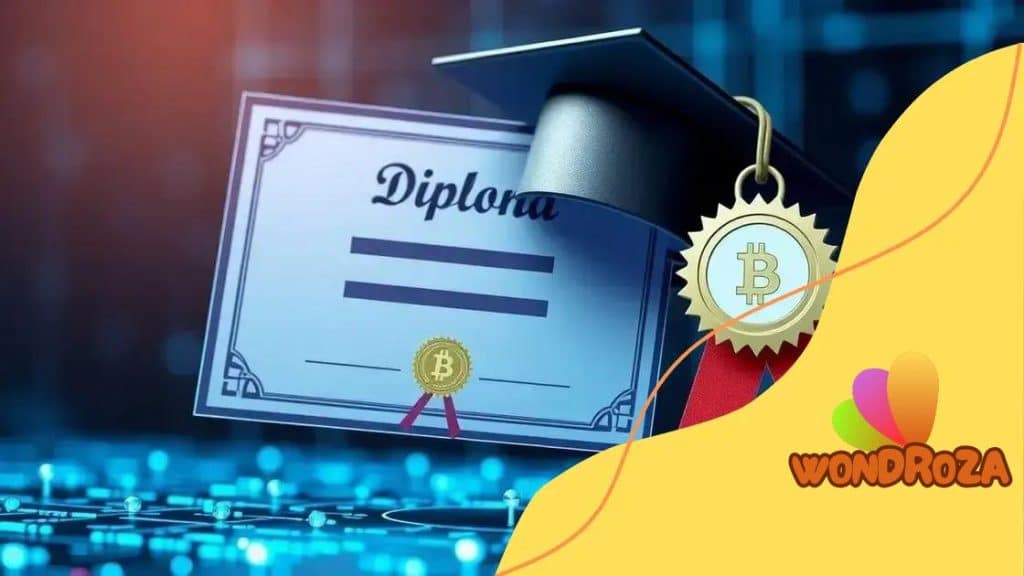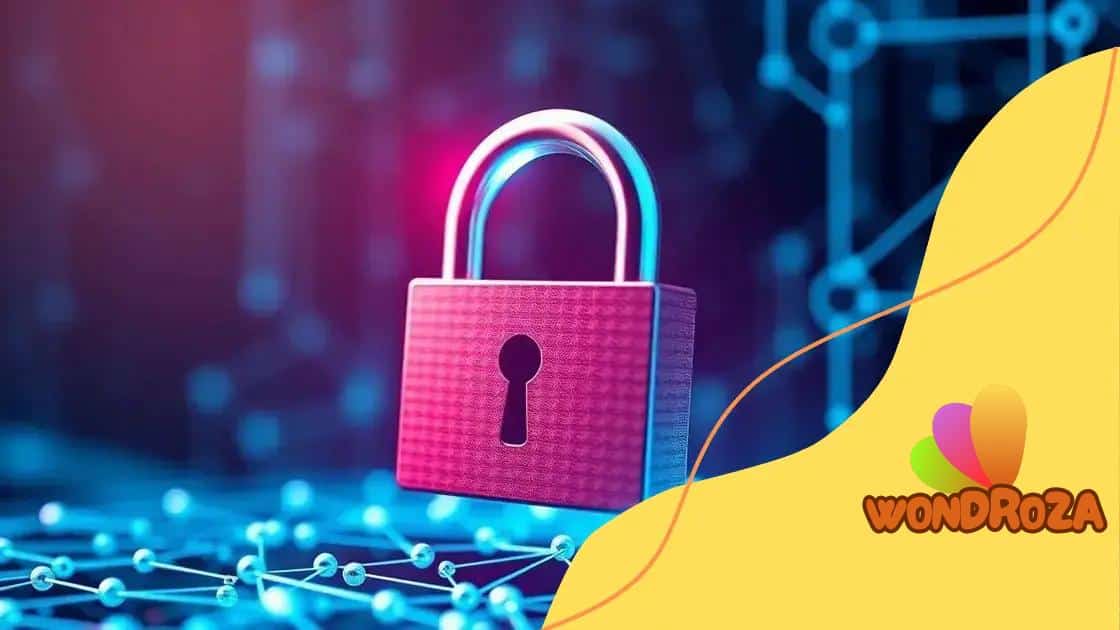How blockchain can transform the education credentialing system

Blockchain can transform the education credentialing system by enhancing security, increasing efficiency, enabling seamless international credit transfers, and empowering students with verifiable proof of their qualifications.
How blockchain can transform the education credentialing system is a question many educators are exploring. Imagine a world where verifying academic credentials becomes instant, secure, and tamper-proof. Let’s dive into how this technology can reshape education.
Understanding blockchain technology
Understanding blockchain technology is essential for grasping its impact on educational credentialing. At its core, blockchain is a decentralized digital ledger that records transactions across multiple computers in a way that ensures the registered information cannot be altered retroactively. This technology provides transparency and security, making it a promising solution for the verification of educational credentials.
When considering how blockchain works, it’s important to recognize its key components. Each block in the chain contains a group of transactions, and every time a new transaction occurs, a record of that transaction is added to every participant’s ledger. This means that modifications are nearly impossible because one would need to alter every copy of the blockchain simultaneously.
Key Features of Blockchain
- Decentralization: Unlike traditional systems, where a single entity has control, blockchain disperses data across a network.
- Transparency: Anyone can view the ledger, making it easy to verify records.
- Security: Data is protected using cryptography, enhancing safety from tampering.
- Immutability: Once recorded, it is extremely difficult to change any information on the blockchain.
Another fundamental aspect of blockchain is its potential to eliminate intermediaries in the credential verification process. Currently, institutions may take time to confirm degrees or certifications, which can delay job applications. With blockchain, employers could verify a candidate’s credentials instantly. This not only speeds up the process but also enhances trust between educational institutions and employers.
The applications of blockchain technology extend beyond just education; it has the potential to transform various sectors by enhancing accountability and reducing fraud. By incorporating blockchain into educational systems, we can create a more efficient and trustworthy way for individuals to showcase their achievements and qualifications.
Current challenges in credentialing
Current challenges in credentialing pose significant obstacles for educational institutions, employers, and students alike. In today’s fast-paced world, the need for swift and accurate verification of academic credentials has never been more pressing. However, traditional credentialing methods often fall short, creating issues related to security, efficiency, and trust.
One major challenge is the time-consuming verification process. Institutions often take weeks or even months to confirm the authenticity of a degree or certification. This lengthy process can delay job offers and educational opportunities for candidates, leading to frustration and missed chances.
Key Issues in Current Credentialing
- Fraudulent credentials: The increase in fake diplomas and degrees is alarming. Many individuals may present counterfeit documents, making it difficult for employers to distinguish genuine qualifications.
- Data privacy: The collection and storage of sensitive personal information during the credentialing process raise concerns regarding data protection and privacy breaches.
- Standardization: Different institutions have varying standards and methods for credentialing, making it challenging to create a unified verification system.
- Resource allocation: Manual processes for verifying credentials consume valuable resources, including time and personnel, that could otherwise be allocated to more fruitful activities.
Additionally, organizations face challenges in trust and transparency. Employers may hesitate to rely on traditional credentialing systems due to the potential for errors or misrepresentation. As a result, the credibility of educational institutions can be undermined.
Students and job seekers also face hurdles as they navigate this complicated landscape. The struggle to present their qualifications accurately can hinder opportunities, especially in competitive fields. The burden often falls on candidates to proactively manage their credentials, which is not only time-consuming but can also lead to anxiety.
With these challenges in mind, it’s clear that traditional credentialing systems need an upgrade. Recognizing the shortcomings in current processes is the first step toward exploring innovative solutions.
How blockchain enhances security

How blockchain enhances security is a crucial aspect of its implementation in educational credentialing. Security is one of the largest concerns in handling personal information and verifying credentials. Blockchain technology offers unique features that significantly bolster security measures compared to traditional methods.
One of the primary ways blockchain enhances security is through its decentralized structure. By distributing data across a network of computers, rather than storing it in a single central location, blockchain minimizes the risk of data breaches. When one part of the network is compromised, the entire system remains protected.
Cryptographic Security
Another vital component of blockchain is its use of cryptography. Each transaction is secured through advanced cryptographic techniques, which make tampering extremely difficult. Only users with the right cryptographic keys can access and validate transactions. This ensures that only authorized individuals can alter any data, maintaining the integrity of the credentials.
Transparency Through Immutability
The concept of immutability also plays a key role in enhancing security. Once data is recorded on the blockchain, it cannot be changed or deleted. Every change must be reflected as a new transaction, which is then recorded. This creates a transparent audit trail that can be reviewed by anyone on the network, providing assurance about the authenticity of records.
- Instant verification: Blockchain enables quick validation of credentials, allowing employers to verify a candidate’s qualifications in real-time.
- Reduced fraud: The transparency and traceability of blockchain records help prevent the submission of fraudulent documents.
- Enhanced trust: Institutions can rely on a verifiable record of achievements, minimizing doubts regarding a candidate’s background.
Furthermore, blockchain can facilitate collaboration among educational institutions. By sharing access to a common blockchain, schools can verify the credentials of former students without lengthy processes. This collaboration fosters a secure environment where the educational achievements are respected, and trust is built among institutions and employers. As more organizations adopt blockchain technology, the security of educational credentialing will likely improve significantly.
Benefits of blockchain for educational institutions
Benefits of blockchain for educational institutions extend far beyond enhancing security. This technology brings numerous advantages that can revolutionize how educational organizations operate and interact with students and employers.
One of the primary benefits is the increased efficiency in managing student records and credentials. Traditional methods often involve tedious paperwork, leading to delays and errors. However, blockchain allows institutions to digitize and store all student data securely in one place. This leads to faster access and updates, helping administrators save time and reduce costs.
Cost Reduction
In addition to efficiency, blockchain can significantly cut operational costs. By automating processes like verification of credentials, institutions can allocate fewer resources to administrative tasks. This means more funds could be directed toward student services and educational programs.
Improved Collaboration
Another advantage of blockchain is enhanced collaboration among educational institutions. By participating in a shared blockchain network, schools can easily verify each other’s records, making it simpler for students transferring credits or degrees. This collaboration builds trust and ensures the accuracy of the data available.
- Real-time updates: Changes in student status or achievements can be reflected immediately.
- Access control: Only authorized people can access sensitive data, ensuring privacy.
- Global recognition: Credentials stored on the blockchain can be universally recognized, simplifying international job applications.
Furthermore, blockchain fosters an environment of transparency. Students can have direct access to their achievements, which they can easily share with potential employers. This gives them more control over their qualifications and helps build trust between students and institutions.
These benefits indicate that adopting blockchain can enhance institutional reputation and attract more students. As blockchain technology continues to advance, educational institutions that embrace its potential may find themselves at a competitive advantage.
Future implications of blockchain in education
Future implications of blockchain in education are vast and exciting. As technology evolves, the role of blockchain is expected to expand, revolutionizing the entire educational landscape. This technology not only enhances credentialing but can also impact how institutions operate and interact with students.
One significant implication is the potential for creating a global educational network. Blockchain can facilitate international collaboration between institutions, enabling seamless credit transfers and recognition of qualifications across borders. This could lead to more students pursuing education in foreign countries without the fear of losing credits or facing bureaucratic hurdles.
Personalized Learning Experiences
In addition, as more data on learning outcomes becomes accessible through blockchain, educational institutions can tailor education to meet individual students’ needs. With detailed records of achievements, schools can create personalized learning pathways that match students with resources and courses suited to their unique strengths and weaknesses.
Decentralized Education Models
Blockchain may also support the rise of decentralized education models. This means that instead of relying on traditional institutions, students could access courses and learning materials directly from educators globally. Such models would empower learners and break down existing barriers to education.
- Increased accessibility: Blockchain could democratize education, making high-quality resources available to everyone.
- Improved accountability: By decentralizing information, blockchain could ensure that educational institutions are held accountable for the quality of their offerings.
- Enhanced innovation: The flexibility offered by blockchain could foster new educational approaches and techniques, driving innovation in teaching and learning.
Moreover, as the workforce evolves, employers increasingly seek candidates with verified skills and experiences. Blockchain can play a critical role in bridging this gap between education and employment by providing reliable, verifiable proof of a candidate’s qualifications.
As we look to the future, it is clear that blockchain technology holds the potential to fundamentally transform education. With its ability to provide security, transparency, and efficiency, educational institutions that adopt this technology will likely lead the way in shaping the next generation of learning.
FAQ – Frequently Asked Questions about Blockchain in Education
How does blockchain enhance security in education?
Blockchain enhances security by decentralizing data storage and using cryptographic techniques, making it difficult for unauthorized users to alter records.
What are the efficiency benefits of blockchain for educational institutions?
Blockchain streamlines the processes of managing student records and verifies credentials almost instantly, reducing administrative workload and costs.
Can blockchain facilitate international credit transfers?
Yes, blockchain can create a global educational network that allows for seamless credit transfers and recognition of qualifications across different institutions.
How can blockchain empower students?
Blockchain provides students with verifiable proof of their qualifications, allowing them to showcase their skills and experiences confidently to potential employers.





